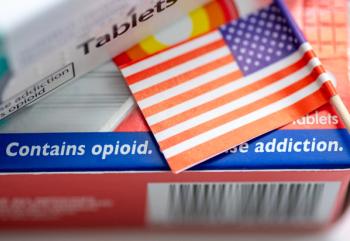
- Drug Topics August 2022
- Volume 166
- Issue 8
Pendulum Ping Pong
A pharmacist reflects on how prescribing behaviors have changed over the years and the potential for stigma linked to providing buprenorphine to patients who need it.
As a young pharmacist in 1982, I dispensed conjugated estrogens (Premarin) by the thousands. We bought Premarin 0.625 mg and 1.25 mg in bottles of 1000 and moved them over the course of 3 or 4 weeks. Every woman was on this medication. We sold 100 tablets for approximately $15, and my customers seemed happy. Today, a bottle of 100 conjugated estrogens tablets, at any strength, is over $600 direct cost.
The pendulum has swung the other direction for use of estrogen, as my fellow seasoned pharmacists can attest to: two trials— HERS1 (NCT00319566) and WHI2 (NCT00000611)—essentially pushed the pendulum to where it is today. Even I have shouted from the lecture halls of St Francis University that “estrogens should be only used for relief of vasomotor symptoms, at the lowest dose for the shortest duration.”
Another pendulum that has shifted is the prescribing of opioids. Back in my younger days, it was rare to see an oxycodone/acetaminophen (Percocet) prescription for 60 tablets. Thanks to the explosion of oxycodone (Oxycontin) in the mid-1990s, providers became too comfortable prescribing opioids, and the opioid pendulum swung wildly. However, approximately 10 years ago, the pendulum slowly moved back toward the center, as the opioid dispensing rate declined from 81.3 to 43.3 per 100 persons today.3
The subsequent crisis of heroin addiction was addressed by the Drug Addiction Treatment Act of 2000,4,5 with waivers that allowed physicians to write buprenorphine (Suboxone) prescriptions following an 8-hour training, then dispensed in community pharmacies. This change was made to avoid the stigma of standing in line at a methadone clinic and was intended to help our citizens living with opioid addiction. We’re told buprenorphine is a partial agonist, with less potential for euphoria, and that naloxone helps decrease the abuse potential. Buprenorphine has a morphine milligram equivalent (MME) factor of (x30). The buprenorphine/naloxone combo (8 mg/2 mg) dosed twice daily is equivalent to 480 mg of morphine, or oxycodone 80 mg dosed 4 times daily. I know opioid experts who would disagree on some of these points.
Every day, we community pharmacists see the benefits of prescribing buprenorphine. Patients come in for their 2- or 4-week supply after a day spent working as mechanics, plumbers, roofers, or mothers. I also know of many pharmacists who will not dispense buprenorphine because they don’t want “those people” in their stores. However, these pharma- cists dispense oxycodone, hydrocodone, oxymorphone, and fentanyl— likely not realizing “those people” are already in their stores.
When I check the prescription drug monitoring program,6 the MMEs for buprenorphine are no longer there. At one time, the 480 MME was listed, but I’ve been told this was removed to avoid stigma. When a new patient comes to the pharmacy, I outfit them with a naloxone rescue kit and a pamphlet describing the MMEs of buprenorphine. In response, many patients tell me it’s the first time they have been treated with respect. I’ve studied this disease enough to understand it truly is a mental health disorder, usually stemming from childhood trauma. It has been postulated that 75% of women abusing alcohol and drugs were victims of sexual abuse7; it’s not in my wheelhouse to determine who deserves compassionate care—all my patients do.
Pharmacies frequently get calls from their warehouses, questioning their buprenorphine purchases. Wholesalers do this at the behest of the Drug Enforcement Administration, as the big 3 wholesalers have been slapped around for opioid sales in the past. Pharmacists are cognizant of the microscopic analysis of their buprenorphine purchases, whereas the Department of Health and Human Services wants to see more buprenorphine prescribers.8
I, for one, do not want to see my brethren in the profession stigmatized for providing such lifesaving medications, including buprenorphine, to people with substance use disorder. Pharmacists are not riding a pendulum; we are more like a Ping Pong ball getting slapped back and forth between government agencies.
References
1. Hulley S, Grady D, Bush T, et al. Randomized trial of estrogen plus progestin for secondary prevention of coronary heart disease in postmenopausal women. Heart and Estrogen/progestin Replacement Study (HERS) Research Group. JAMA. 1998;280(7):605-613. doi:10.1001/jama.280.7.605
2. Henderson VW, Lobo RA. Hormone therapy and the risk of stroke: perspectives 10 years after the Women’s Health Initiative trials. Climacteric. 2012;15(3):229-234. doi:10/3109/13697137.2012.656254
3. US opioid dispensing rate map. CDC. Reviewed November 10, 2021. Accessed July 13, 2022.
4. Become a buprenorphine waivered practitioner. Substance Abuse and Mental Health Services Administration. Updated April 21, 2022. Accessed July 12, 2022.
5. Statues, regulations, and guidelines. Substance Abuse and Mental Health Services Administration. Updated July 1, 2022. Accessed July 12, 2022.
6. Prescription drug monitoring programs (PDMPs). CDC. Reviewed February 12, 2021. Accessed July 12, 2022.
7. Liebschutz J, Savetsky JB, Saitz R, Horton NJ, Lloyd-Travaglini C, Samet JH. The relationship between sexual and physical abuse and substance abuse consequences. J Subst Abuse. Treat.2022;22(3):121-128. doi:10.1016/s0740-5472(02)00220-9
8. HHS releases new buprenorphine practice guidelines, expanding access to treatment for opioid use disorder. News release. Department of Health and Human Services; April 27, 2021. Accessed July 12, 2022.
Articles in this issue
over 3 years ago
Managing ADHD in Children and Adultsover 3 years ago
At a Glance: Interim COVID-19 Immunization Scheduleover 3 years ago
Vivjoa Approved for Recurrent Vulvovaginal Candidiasisover 3 years ago
Pharmacists Fight to Take on Opioid Use Disorderover 3 years ago
What's Coming in the 2022-2023 Flu Seasonover 3 years ago
Become the Pharmacy of the Future With Technology SolutionsNewsletter
Pharmacy practice is always changing. Stay ahead of the curve with the Drug Topics newsletter and get the latest drug information, industry trends, and patient care tips.


















































































































